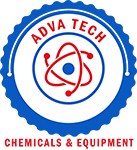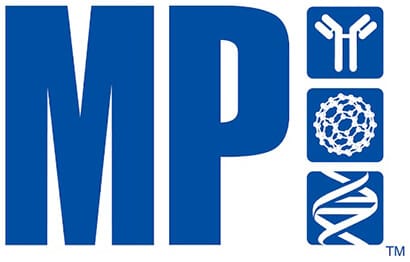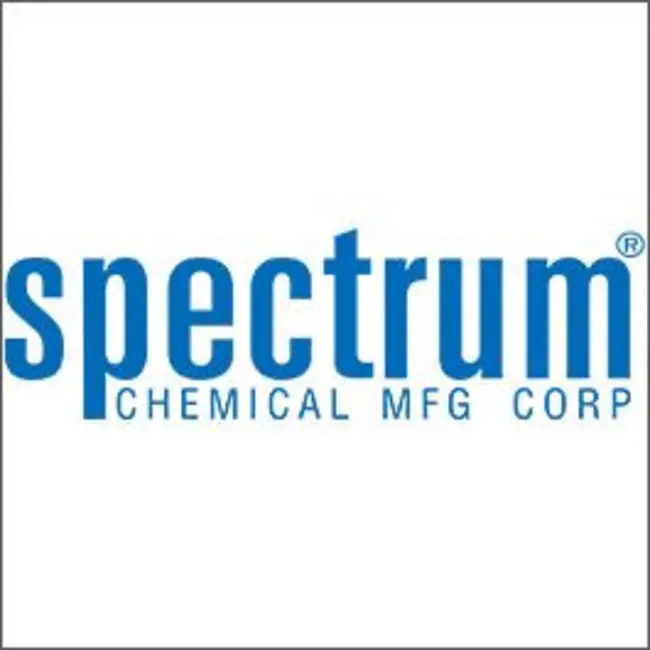GenScript Nanjing Inc.
Showing 2251–2300 of 2554 results
-
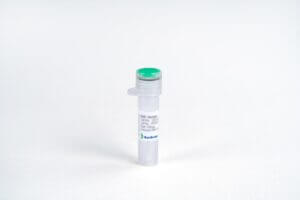
Shh (C25II), Mouse
$68.14 Add to cart View Product DetailsSonic Hedgehog (Shh) is a member of the Hedgehog (Hh) family of highly conserved proteins which are widely represented throughout the animal kingdom. In mammal, there are three related Hh proteins, Sonic (Shh), Desert (Dhh) and Indian (Ihh). They share a high degree of amino-acid sequence identity (e.g., Shh and Ihh are 93% identical). Sonic Hedgehog plays a role in cell growth, cell specialization, and the normal shaping (patterning) of the body. Shh is also important for development of the brain and spinal cord (central nervous system), eyes, limbs, and many other parts of the body.
-

Shh (C25II), Mouse
$155.25 Add to cart View Product DetailsSonic Hedgehog (Shh) is a member of the Hedgehog (Hh) family of highly conserved proteins which are widely represented throughout the animal kingdom. In mammal, there are three related Hh proteins, Sonic (Shh), Desert (Dhh) and Indian (Ihh). They share a high degree of amino-acid sequence identity (e.g., Shh and Ihh are 93% identical). Sonic Hedgehog plays a role in cell growth, cell specialization, and the normal shaping (patterning) of the body. Shh is also important for development of the brain and spinal cord (central nervous system), eyes, limbs, and many other parts of the body.
-
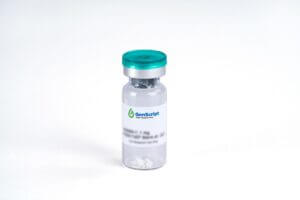
Shh, Human
$1,957.88 Add to cart View Product DetailsMembers of the Hedgehog (Hh) family are highly conserved proteins which are widely represented throughout the animal kingdom. The three known mammalian Hh proteins, Sonic (Shh), Desert (Dhh) and Indian (Ihh) are structurally related and share a high degree of amino-acid sequence identity (e.g., Shh and Ihh are 93% identical). The biologically active form of Hh molecules is obtained by autocatalytic cleavage of their precursor proteins and corresponds to approximately the N-terminal one half of the precursor molecule. Although Hh proteins have unique expression patterns and distinct biological roles within their respective regions of secretion, they use the same signaling pathway and can substitute for each other in experimental systems.
-

Shh, Human
$163.88 Add to cart View Product DetailsMembers of the Hedgehog (Hh) family are highly conserved proteins which are widely represented throughout the animal kingdom. The three known mammalian Hh proteins, Sonic (Shh), Desert (Dhh) and Indian (Ihh) are structurally related and share a high degree of amino-acid sequence identity (e.g., Shh and Ihh are 93% identical). The biologically active form of Hh molecules is obtained by autocatalytic cleavage of their precursor proteins and corresponds to approximately the N-terminal one half of the precursor molecule. Although Hh proteins have unique expression patterns and distinct biological roles within their respective regions of secretion, they use the same signaling pathway and can substitute for each other in experimental systems.
-
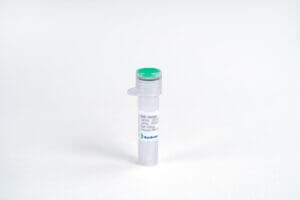
Shh, Mouse
$1,177.31 Add to cart View Product DetailsMembers of the Hedgehog (Hh) family are highly conserved proteins which are widely represented throughout the animal kingdom. The three known mammalian Hh proteins, Sonic (Shh), Desert (Dhh) and Indian (Ihh) are structurally related and share a high degree of amino-acid sequence identity (e.g., Shh and Ihh are 93% identical). The biologically active form of Hh molecules is obtained by autocatalytic cleavage of their precursor proteins and corresponds to approximately the N-terminal one half of the precursor molecule. Although Hh proteins have unique expression patterns and distinct biological roles within their respective regions of secretion, they use the same signaling pathway and can substitute for each other in experimental systems.
-

Shh, Mouse
$68.14 Add to cart View Product DetailsMembers of the Hedgehog (Hh) family are highly conserved proteins which are widely represented throughout the animal kingdom. The three known mammalian Hh proteins, Sonic (Shh), Desert (Dhh) and Indian (Ihh) are structurally related and share a high degree of amino-acid sequence identity (e.g., Shh and Ihh are 93% identical). The biologically active form of Hh molecules is obtained by autocatalytic cleavage of their precursor proteins and corresponds to approximately the N-terminal one half of the precursor molecule. Although Hh proteins have unique expression patterns and distinct biological roles within their respective regions of secretion, they use the same signaling pathway and can substitute for each other in experimental systems.
-

Shh, Mouse
$155.25 Add to cart View Product DetailsMembers of the Hedgehog (Hh) family are highly conserved proteins which are widely represented throughout the animal kingdom. The three known mammalian Hh proteins, Sonic (Shh), Desert (Dhh) and Indian (Ihh) are structurally related and share a high degree of amino-acid sequence identity (e.g., Shh and Ihh are 93% identical). The biologically active form of Hh molecules is obtained by autocatalytic cleavage of their precursor proteins and corresponds to approximately the N-terminal one half of the precursor molecule. Although Hh proteins have unique expression patterns and distinct biological roles within their respective regions of secretion, they use the same signaling pathway and can substitute for each other in experimental systems.
-

Siglec-10 Fc Chimera, Human
$1,293.75 Add to cart View Product DetailsSiglec-10 is immune system-restricted and highly expressed in peripheral blood leukocytes. Siglec-10 preferably binds to α-2,3- or α-2,6-linked sialic acid (similarity). Siglec10 is involved in the negative regulation of B cell antigen receptor signal transduction. The inhibition of B cell activation depends on PTPN6/SHP-1 (by similarity). The binding of Siglec10 to CD24 may be involved in the selective suppression of the immune response (by similarity) to risk-related molecular patterns (DAMPs) (such as HMGB1, HSP70 and HSP90). The combination of Siglec10 and CD24 may regulate the immune response of natural killer (NK) cells. Play a role in controlling autoimmunity (by similarity). In the process of initiating an adaptive immune response by CD8-α+ dendritic cells, cross-presentation is inhibited by weakening the formation of MHC class I peptide complexes. The function seems to imply the recruitment of PTPN6/SHP-1, which dephosphorylates NCF1 of the NADPH oxidase complex, thereby promoting phagosome acidification (by similarity).
-

Siglec-10 Fc Chimera, Human
$189.75 Add to cart View Product DetailsSiglec-10 is immune system-restricted and highly expressed in peripheral blood leukocytes. Siglec-10 preferably binds to α-2,3- or α-2,6-linked sialic acid (similarity). Siglec10 is involved in the negative regulation of B cell antigen receptor signal transduction. The inhibition of B cell activation depends on PTPN6/SHP-1 (by similarity). The binding of Siglec10 to CD24 may be involved in the selective suppression of the immune response (by similarity) to risk-related molecular patterns (DAMPs) (such as HMGB1, HSP70 and HSP90). The combination of Siglec10 and CD24 may regulate the immune response of natural killer (NK) cells. Play a role in controlling autoimmunity (by similarity). In the process of initiating an adaptive immune response by CD8-α+ dendritic cells, cross-presentation is inhibited by weakening the formation of MHC class I peptide complexes. The function seems to imply the recruitment of PTPN6/SHP-1, which dephosphorylates NCF1 of the NADPH oxidase complex, thereby promoting phagosome acidification (by similarity).
-

Siglec-10 Fc Chimera, Human
$137.14 Add to cart View Product DetailsSiglec-10 is immune system-restricted and highly expressed in peripheral blood leukocytes. Siglec-10 preferably binds to α-2,3- or α-2,6-linked sialic acid (similarity). Siglec10 is involved in the negative regulation of B cell antigen receptor signal transduction. The inhibition of B cell activation depends on PTPN6/SHP-1 (by similarity). The binding of Siglec10 to CD24 may be involved in the selective suppression of the immune response (by similarity) to risk-related molecular patterns (DAMPs) (such as HMGB1, HSP70 and HSP90). The combination of Siglec10 and CD24 may regulate the immune response of natural killer (NK) cells. Play a role in controlling autoimmunity (by similarity). In the process of initiating an adaptive immune response by CD8-α+ dendritic cells, cross-presentation is inhibited by weakening the formation of MHC class I peptide complexes. The function seems to imply the recruitment of PTPN6/SHP-1, which dephosphorylates NCF1 of the NADPH oxidase complex, thereby promoting phagosome acidification (by similarity).
-

Siglec-15 Fc Chimera, Human
$1,293.75 Add to cart View Product DetailsSiglec-15 preferentially recognizes the Neu5Acalpha2-6GalNAcalpha- structure. Siglec-15 associates with the activating adaptor proteins DNAX activation protein (DAP)12 and DAP10 via its lysine residue in the transmembrane domain. Siglec-15 is the second human Siglec identified to have an activating signaling potential; unlike Siglec-14, however, it does not have an inhibitory counterpart.
-

Siglec-15 Fc Chimera, Human
$189.75 Add to cart View Product DetailsSiglec-15 preferentially recognizes the Neu5Acalpha2-6GalNAcalpha- structure. Siglec-15 associates with the activating adaptor proteins DNAX activation protein (DAP)12 and DAP10 via its lysine residue in the transmembrane domain. Siglec-15 is the second human Siglec identified to have an activating signaling potential; unlike Siglec-14, however, it does not have an inhibitory counterpart.
-

Siglec-15 Fc Chimera, Human
$137.14 Add to cart View Product DetailsSiglec-15 preferentially recognizes the Neu5Acalpha2-6GalNAcalpha- structure. Siglec-15 associates with the activating adaptor proteins DNAX activation protein (DAP)12 and DAP10 via its lysine residue in the transmembrane domain. Siglec-15 is the second human Siglec identified to have an activating signaling potential; unlike Siglec-14, however, it does not have an inhibitory counterpart.
-

Siglec-2/CD22, hFc, Human
$189.75 Add to cart View Product DetailsCD22, or cluster of differentiation-22, is a molecule belonging to the SIGLEC family of lectins. It is found on the surface of mature B cells and to a lesser extent on some immature B cells. CD22 a member of the immunoglobulin superfamily. CD22 functions as an inhibitory receptor for B cell receptor (BCR) signaling. It is also involved in the B cell trafficking to Peyer’s patches in mice.
-

sIL-6Rα, His, Human
$1,470.56 Add to cart View Product DetailsInterleukin-6 Receptor (IL-6R) is a single trans-membrane protein that is the receptor for Interleukin-6 (IL-6). IL-6R forms a hexameric complex upon binding 2 molecules of IL-6 and two molecules of glycoprotein 130 (gp130) which activates intracellular JAK/STAT pathways. Although the normal form of IL-6R is the membrane-bound 80 kDa subunit, a soluble form of IL-6R (sIL-6R) can be generated physiologically by limited proteolysis or alternative splicing. sIL-6R binds to both IL-6 and gp130 generating intracellular signaling. In the immune system, sIL-6R is produced by both naïve and memory CD4 T-cells and strongly augments IL-6 ligand’s induction of Th-17 cells.
-

sIL-6Rα, His, Human
$51.75 Add to cart View Product DetailsInterleukin-6 Receptor (IL-6R) is a single trans-membrane protein that is the receptor for Interleukin-6 (IL-6). IL-6R forms a hexameric complex upon binding 2 molecules of IL-6 and two molecules of glycoprotein 130 (gp130) which activates intracellular JAK/STAT pathways. Although the normal form of IL-6R is the membrane-bound 80 kDa subunit, a soluble form of IL-6R (sIL-6R) can be generated physiologically by limited proteolysis or alternative splicing. sIL-6R binds to both IL-6 and gp130 generating intracellular signaling. In the immune system, sIL-6R is produced by both naïve and memory CD4 T-cells and strongly augments IL-6 ligand’s induction of Th-17 cells.
-

sIL-6Rα, His, Human
$194.06 Add to cart View Product DetailsInterleukin-6 Receptor (IL-6R) is a single trans-membrane protein that is the receptor for Interleukin-6 (IL-6). IL-6R forms a hexameric complex upon binding 2 molecules of IL-6 and two molecules of glycoprotein 130 (gp130) which activates intracellular JAK/STAT pathways. Although the normal form of IL-6R is the membrane-bound 80 kDa subunit, a soluble form of IL-6R (sIL-6R) can be generated physiologically by limited proteolysis or alternative splicing. sIL-6R binds to both IL-6 and gp130 generating intracellular signaling. In the immune system, sIL-6R is produced by both naïve and memory CD4 T-cells and strongly augments IL-6 ligand’s induction of Th-17 cells.
-
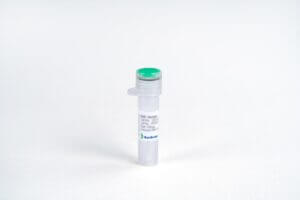
SIRPα Fc Chimera, Human
$1,035.00 Add to cart View Product DetailsSignal regulatory protein alpha (SIRPα, designated CD172a), is also known as CD172 antigen-like family member A (CD172a), also called SHPS-1 (SHP substrate 1) and previously, MyD-1 (Myeloid/Dendritic-1), which is a monomeric about 90kDa type I transmembrane glycoprotein that belongs to the SIRP/SHPS (CD172) family of the immunoglobulin superfamily. SIRPα is Ubiquitous and highly expressed in brain. SIRPA/CD172a is immunoglobulin-like cell surface receptor for CD47 and acts as docking protein and induces translocation of PTPN6, PTPN11 and other binding partners from the cytosol to the plasma membrane. SIRPA/SHPS-1 supports adhesion of cerebellar neurons, neurite outgrowth and glial cell attachment and may play a key role in intracellular signaling during synaptogenesis and in synaptic function by similarity. SIRPα recognition of surfactants SP-A and SP-D in the lung can inhibit alveolar macrophage cytokine production.
-

SIRPα Fc Chimera, Human
$215.63 Add to cart View Product DetailsSignal regulatory protein alpha (SIRPα, designated CD172a), is also known as CD172 antigen-like family member A (CD172a), also called SHPS-1 (SHP substrate 1) and previously, MyD-1 (Myeloid/Dendritic-1), which is a monomeric about 90kDa type I transmembrane glycoprotein that belongs to the SIRP/SHPS (CD172) family of the immunoglobulin superfamily. SIRPα is Ubiquitous and highly expressed in brain. SIRPA/CD172a is immunoglobulin-like cell surface receptor for CD47 and acts as docking protein and induces translocation of PTPN6, PTPN11 and other binding partners from the cytosol to the plasma membrane. SIRPA/SHPS-1 supports adhesion of cerebellar neurons, neurite outgrowth and glial cell attachment and may play a key role in intracellular signaling during synaptogenesis and in synaptic function by similarity. SIRPα recognition of surfactants SP-A and SP-D in the lung can inhibit alveolar macrophage cytokine production.
-
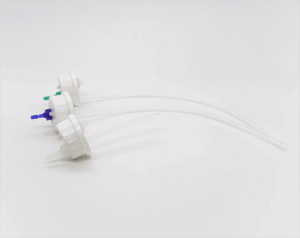
Small Two Pass Screw Cap (Fit 5L and 10L container)
$62.96 Add to cart View Product DetailsSmall Two Pass Screw Cap (Fit 5L and 10L container) for eBlot
-
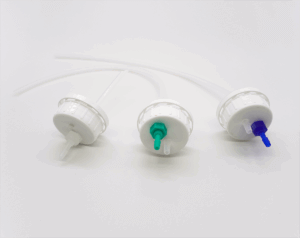
Small Two Pass Screw Cap(Fit 5L and 10L container)
$62.96 Add to cart View Product DetailsSmall Two Pass Screw Cap(Fit 5L and 10L container)
-
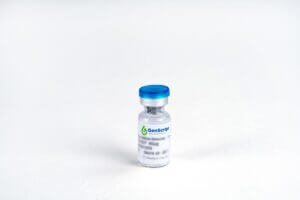
SNAP-tag Antibody, pAb, Rabbit
$87.98 Add to cart View Product DetailsRabbit Anti-SNAP-tag Polyclonal Antibody specifically reacts with fusion proteins containing the SNAP-tag.
-

SP-D, Human
$116.44 Add to cart View Product DetailsSurfactant protein D is a member of the collectin family of innate immune modulators. It is constitutively secreted by alveolar lining cells and epithelium associated with tubular structures, that contains a N-terminal collagen-like domain and a C-terminal lectin domain that are characteristic of members of the collectin family of proteins, and also shows calcium-dependent binding to specific saccharides. Besides it is involved in the development of acute and chronic inflammation of the lung. Several human lung diseases are characterized by decreased levels of bronchoalveolar SP-D.
-
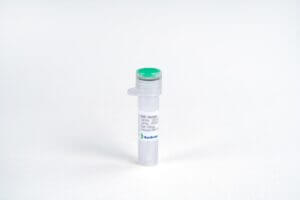
SPARC, Human
$1,224.75 Add to cart View Product DetailsSPARC, an acronym for ’secreted protein, acidic and rich in cysteine’, is also known as osteonectin or BM-40. It is the founding member of a family of secreted matricellular proteins with similar domain structure. The 303 amino acid , 43 kDa protein contains a 17 aa signal sequence, an N-terminal acidic region that binds calcium, a follistatin domain containing Kazal-like sequences, and a C-terminal extracellular calcium (EC) binding domain with two EF-hand motifs. SPARC is produced by fibroblasts, capillary endothelial cells, platelets and macrophages, especially in areas of tissue morphogenesis and remodeling. SPARC shows context-specific effects, but generally inhibits adhesion, spreading and proliferation, and promotes collagen matrix formation. For endothelial cells, SPARC disrupts focal adhesions and binds and sequesters PDGF and VEGF. SPARC is abundantly expressed in bone, where it promotes osteoblast differentiation and inhibits adipogenesis.
-

SPARC, Human
$155.25 Add to cart View Product DetailsSPARC, an acronym for ’secreted protein, acidic and rich in cysteine’, is also known as osteonectin or BM-40. It is the founding member of a family of secreted matricellular proteins with similar domain structure. The 303 amino acid , 43 kDa protein contains a 17 aa signal sequence, an N-terminal acidic region that binds calcium, a follistatin domain containing Kazal-like sequences, and a C-terminal extracellular calcium (EC) binding domain with two EF-hand motifs. SPARC is produced by fibroblasts, capillary endothelial cells, platelets and macrophages, especially in areas of tissue morphogenesis and remodeling. SPARC shows context-specific effects, but generally inhibits adhesion, spreading and proliferation, and promotes collagen matrix formation. For endothelial cells, SPARC disrupts focal adhesions and binds and sequesters PDGF and VEGF. SPARC is abundantly expressed in bone, where it promotes osteoblast differentiation and inhibits adipogenesis.
-
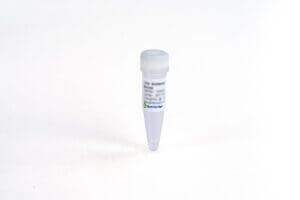
ST2 (16G5), mAb, Mouse
$144.04 Add to cart View Product DetailsSuppression of Tumorigenicity 2 (ST2), a member of the Interleukin-1 receptor family, has two isoforms, one is soluble form (sST2) and the other one is transmembrane form (ST2L). sST2, lacking the transmembrane and intracellular domains, can prevent the interaction between IL-33 and ST2L. It plays a role in inflammatory and immune processes and is considered as a promising marker for myocardial stress.
-

ST2 (16G5), mAb, Mouse
$1,440.38 Add to cart View Product DetailsSuppression of Tumorigenicity 2 (ST2), a member of the Interleukin-1 receptor family, has two isoforms, one is soluble form (sST2) and the other one is transmembrane form (ST2L). sST2, lacking the transmembrane and intracellular domains, can prevent the interaction between IL-33 and ST2L. It plays a role in inflammatory and immune processes and is considered as a promising marker for myocardial stress.
-

ST2 (16G5), mAb, Mouse
$12,247.50 Add to cart View Product DetailsSuppression of Tumorigenicity 2 (ST2), a member of the Interleukin-1 receptor family, has two isoforms, one is soluble form (sST2) and the other one is transmembrane form (ST2L). sST2, lacking the transmembrane and intracellular domains, can prevent the interaction between IL-33 and ST2L. It plays a role in inflammatory and immune processes and is considered as a promising marker for myocardial stress.
-

ST2 (6B3), mAb, Mouse
$144.04 Add to cart View Product DetailsSuppression of Tumorigenicity 2 (ST2), a member of the Interleukin-1 receptor family, has two isoforms, one is soluble form (sST2) and the other one is transmembrane form (ST2L). sST2, lacking the transmembrane and intracellular domains, can prevent the interaction between IL-33 and ST2L. It plays a role in inflammatory and immune processes and is considered as a promising marker for myocardial stress.
-

ST2 (6B3), mAb, Mouse
$1,440.38 Add to cart View Product DetailsSuppression of Tumorigenicity 2 (ST2), a member of the Interleukin-1 receptor family, has two isoforms, one is soluble form (sST2) and the other one is transmembrane form (ST2L). sST2, lacking the transmembrane and intracellular domains, can prevent the interaction between IL-33 and ST2L. It plays a role in inflammatory and immune processes and is considered as a promising marker for myocardial stress.
-

ST2 (6B3), mAb, Mouse
$12,247.50 Add to cart View Product DetailsSuppression of Tumorigenicity 2 (ST2), a member of the Interleukin-1 receptor family, has two isoforms, one is soluble form (sST2) and the other one is transmembrane form (ST2L). sST2, lacking the transmembrane and intracellular domains, can prevent the interaction between IL-33 and ST2L. It plays a role in inflammatory and immune processes and is considered as a promising marker for myocardial stress.
-

ST2 (8H6), mAb, Mouse
$144.04 Add to cart View Product DetailsSuppression of Tumorigenicity 2 (ST2), a member of the Interleukin-1 receptor family, has two isoforms, one is soluble form (sST2) and the other one is transmembrane form (ST2L). sST2, lacking the transmembrane and intracellular domains, can prevent the interaction between IL-33 and ST2L. It plays a role in inflammatory and immune processes and is considered as a promising marker for myocardial stress.
-

ST2 (8H6), mAb, Mouse
$1,440.38 Add to cart View Product DetailsSuppression of Tumorigenicity 2 (ST2), a member of the Interleukin-1 receptor family, has two isoforms, one is soluble form (sST2) and the other one is transmembrane form (ST2L). sST2, lacking the transmembrane and intracellular domains, can prevent the interaction between IL-33 and ST2L. It plays a role in inflammatory and immune processes and is considered as a promising marker for myocardial stress.
-

ST2 (8H6), mAb, Mouse
$12,247.50 Add to cart View Product DetailsSuppression of Tumorigenicity 2 (ST2), a member of the Interleukin-1 receptor family, has two isoforms, one is soluble form (sST2) and the other one is transmembrane form (ST2L). sST2, lacking the transmembrane and intracellular domains, can prevent the interaction between IL-33 and ST2L. It plays a role in inflammatory and immune processes and is considered as a promising marker for myocardial stress.
-

Stabilized dNTP Mix, 10 mM each
$30.19 Add to cart View Product Details10 mM Stabilized dNTP mix (HS dNTP Mix) is suitable for use in PCR, sequencing, nick translation, fill-in, cDNA synthesis, TdT tailing reactions, and dilution of radiolabeled dNTPs. These nucleotides are supplied as convenient, ready-to-use solutions at a concentration of 10 mM in Tris-HCl (pH 7.5). The 10 mM HS dNTP Mix contains all four dNTPs, each at a final concentration of 10 mM. 10 mM HS dNTP Mix also contains a stabilizer, which makes it a very long-lasting tool. If stored at 37°C for one week, its activity does not decrease.
-

Staphylokinase
$625.31 Add to cart View Product DetailsStaphylokinase (SAK), a 16kDa profibrinolytic protein from the Staphylococcus aureus, has been demonstrated to induce highly fibrin-specific thrombolysis in both human plasma and in limited clinical trials. Recent studies on the thrombolytic potential of recombinant SAK in achieving early perfusion in myocardial infarction and in the dissolution of platelet-rich clot have clearly established its immense utility in clinical medicine as a thrombolytic agent and suggested that it can be developed as a potent clot-dissolving agent.
-

Staphylokinase
$163.88 Add to cart View Product DetailsStaphylokinase (SAK), a 16kDa profibrinolytic protein from the Staphylococcus aureus, has been demonstrated to induce highly fibrin-specific thrombolysis in both human plasma and in limited clinical trials. Recent studies on the thrombolytic potential of recombinant SAK in achieving early perfusion in myocardial infarction and in the dissolution of platelet-rich clot have clearly established its immense utility in clinical medicine as a thrombolytic agent and suggested that it can be developed as a potent clot-dissolving agent.
-

Streptavidin
$116.44 Add to cart View Product DetailsStreptavidin is a biotin-binding protein found in the culture broth of the bacterium Streptomyces avidinii. Streptavidin can bind to four moles of biotin per mole of protein,and it shows extremely high affinity, approximately 10,000-15,000 Da. Streptavidin lacks the carbohydrate side chains present on avidin and has an isoelectric point of 6.5 to avidin’s 10 far closer to that at which most useful biological interactions occur. As a result, Streptavidin frequently exhibits much lower non-specific binding than avidin does.
-

Streptavidin Antibody, pAb, Rabbit
$114.71 Add to cart View Product DetailsGenScript Streptavidin Antibody is specific to streptavidin.
-

Streptavidin Antibody, pAb, Rabbit
$70.73 Add to cart View Product DetailsGenScript Streptavidin Antibody is specific to streptavidin.
-
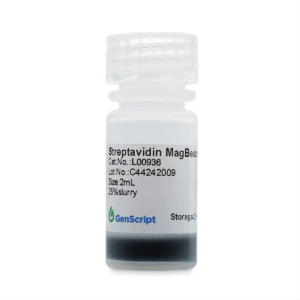
Streptavidin MagBeads
$142.31 Add to cart View Product DetailsIntended Use
GenScript Streptavidin
MagBeads are ideal for fast and convenient purification of biotinylated
proteins, peptides, antibodies and oligonucleotides, and protein interaction
studies.Principle
Add the sample containing
biotinylated molecules to the Streptavidin MagBeads and allow the molecules
bind to the MagBeads during a short incubation. Then separate the molecule‐bound beads with a magnetic separation rack. With indirect capture, mix
the biotinylated molecule with the sample to capture the molecule‐target complex before adding the MagBeads.Description of Material
GenScript Streptavidin MagBeads
are super paramagnetic beads of approximately 45-100
μm in diameter, covalently coated with highly
purified streptavidin. These magnetic beads are composed of magnetite core
encapsulated by agarose. The magnetic beads have streptavidin as its surface
protein which is 53kDa. in size having four binding site per molecule. These
beads have pH stability of 2 to 14 (short term); 3 to 13 (long term). The beads
are supplied as 25% slurry in phosphate buffered saline (PBS), pH 7.4,
containing 20% ethanol.Storage and Stability
This product is stable
until the expiration date stated on the COA, when stored unopened at 2–8°C. Do NOT freeze the product. Keep
the MagBeads in liquid suspension during storage and all handling steps. Drying
will cause loss of binding capacity and result in reduced performance.
Resuspend the beads well before use. Be careful to avoid bacterial/fungal
contamination. -
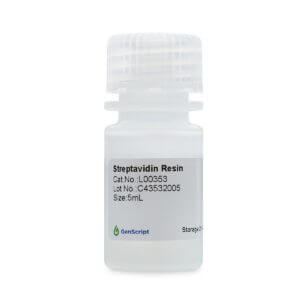
Streptavidin Resin
$136.28 Add to cart View Product DetailsGenScript Streptavidin Resin is an affinity chromatography medium designed for easy,
one-step purification of biotinylated peptides, antibodies, lectins, etc
from samples. The purified recombinant streptavidin is covalently coupling to 4%
highly cross-linked agarose. The
coupling is optimized to give high binding capacity for biotinylated molecules. The total
binding capacity of Streptavidin Resin is more
than 120 nmol of D-Biotin/ml
settled resin. Table 1 lists the characteristics of Streptavidin Resin.
Streptavidin is a biotin-binding protein found in the culture broth of the bacterium Streptomyces
avidinii. Streptavidin binds 4 moles of biotin per mole of protein with an
extremely high affinity. Streptavidin lacks carbohydrate side chains present on
avidin and has an isoelectric point of 6.5 (vs 10 for avidin) close to
where most useful biological interactions occur. As a result,
streptavidin frequently exhibits much lower non-specific binding than avidin
does. -
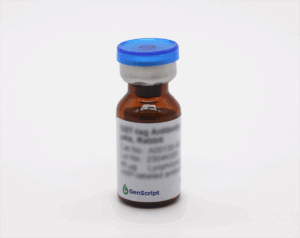
Streptavidin-HRP
$81.94 Add to cart View Product DetailsStreptavidin is a protein that has similar binding properties to avidin. It is isolated from streptomyces avidinii. Streptavidin has a molecular weight of 60 KD and has 4 subunits. Each subunit can bind one molecule of biotin. Biotin is a 244 da water soluble vitamin. Streptavidin has an extremely high binding affinity (Kd=10 – 15 ) for biotin.
Streptavidin – HRP (M00091) is a HRP conjugated streptavidin and can be used for analysis of biotinylated molecules. -

SUMO Protease Animal-Free, His
$108.68 Add to cart View Product DetailsSUMO protease, also known as Ulp, is a protease
that specifically removes small ubiquitin-related modifier (SUMO) in any recombinant SUMO fusion protein. Different
from other tag removal proteases such as enterokinase (EK) and TEV which
recognize a specific amino acid sequence and cut at a specific cleavage site,
SUMO protease recognizes the SUMO tertiary structure and cleave it, more
specifically and leaving no residual amino acids.
GenScript’s SUMO Protease Animal-Free, His, is
the recombinant SUMO protease fragment from Saccharomyces
cerevisiae. This recombinant enzyme is expressed in E.coli and purified to obtain high yields of the active enzyme. It
is produced under an animal free process, and is suitable for drug and vaccine
development, manufacture and other applications. This product is designed with
a C-terminal 6x His tag which can be removed after the SUMO cleavage reaction
by purification using Ni2+ affinity chromatography resin (Cat. No. L00223) or Ni-charged magnetic beads (Cat. No. L00295). -

SUMO Protease Animal-Free, His
$36.23 Add to cart View Product DetailsSUMO protease, also known as Ulp, is a protease
that specifically removes small ubiquitin-related modifier (SUMO) in any recombinant SUMO fusion protein. Different
from other tag removal proteases such as enterokinase (EK) and TEV which
recognize a specific amino acid sequence and cut at a specific cleavage site,
SUMO protease recognizes the SUMO tertiary structure and cleave it, more
specifically and leaving no residual amino acids.
GenScript’s SUMO Protease Animal-Free, His, is
the recombinant SUMO protease fragment from Saccharomyces
cerevisiae. This recombinant enzyme is expressed in E.coli and purified to obtain high yields of the active enzyme. It
is produced under an animal free process, and is suitable for drug and vaccine
development, manufacture and other applications. This product is designed with
a C-terminal 6x His tag which can be removed after the SUMO cleavage reaction
by purification using Ni2+ affinity chromatography resin (Cat. No. L00223) or Ni-charged magnetic beads (Cat. No. L00295). -

SUMO Protease Animal-Free, His
$434.70 Add to cart View Product DetailsSUMO protease, also known as Ulp, is a protease
that specifically removes small ubiquitin-related modifier (SUMO) in any recombinant SUMO fusion protein. Different
from other tag removal proteases such as enterokinase (EK) and TEV which
recognize a specific amino acid sequence and cut at a specific cleavage site,
SUMO protease recognizes the SUMO tertiary structure and cleave it, more
specifically and leaving no residual amino acids.
GenScript’s SUMO Protease Animal-Free, His, is
the recombinant SUMO protease fragment from Saccharomyces
cerevisiae. This recombinant enzyme is expressed in E.coli and purified to obtain high yields of the active enzyme. It
is produced under an animal free process, and is suitable for drug and vaccine
development, manufacture and other applications. This product is designed with
a C-terminal 6x His tag which can be removed after the SUMO cleavage reaction
by purification using Ni2+ affinity chromatography resin (Cat. No. L00223) or Ni-charged magnetic beads (Cat. No. L00295). -

SUMO-tag Antibody(4G11E9), mAb, Mouse
$87.98 Add to cart View Product DetailsGenScript SUMO-tag Antibody (4G11E9), mAb, Mouse specifically reacts with fusion proteins containing SUMO epitope tags.
-
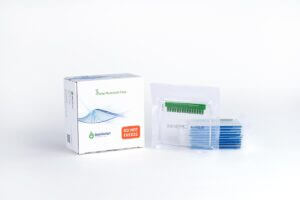
SurePAGE™, Bis-Tris, 10×8, 10%, 10 wells
$83.66 Add to cart View Product DetailsGenScript SurePAGE, Bis-Tris, 10 cm x 8 cm gels are high-performance precast mini polyacrylamide gels with a special design that allows large sample loading volumes. The unique formulation of the gel and cassette design enables superior band resolution and significantly improved band evenness. SurePAGE gels are cast in a neutral pH buffer that minimizes polyacrylamide hydrolysis, increases gel stability and minimizes protein modification.
SurePAGE gels guarantee excellent batch-to-batch consistency and a reliable protein migration pattern. With specially formulated Tris-MOPS running buffer, proteins can be separated quickly and efficiently for subsequent detection by staining or Western blotting.
SurePAGE, Bis-Tris, 10×8 gels are available in gradient (4-20%, 4-12%, and 8-16%) and homogeneous (8%, 10%, 12% and 15%) concentrations. Each gel concentration has comb configurations of 10-well, 12-well and 15-well.
-

SurePAGE™, Bis-Tris, 10×8, 10%, 12 wells
$83.66 Add to cart View Product DetailsGenScript SurePAGE, Bis-Tris, 10 cm x 8 cm gels are high-performance precast mini polyacrylamide gels with a special design that allows large sample loading volumes. The unique formulation of the gel and cassette design enables superior band resolution and significantly improved band evenness. SurePAGE gels are cast in a neutral pH buffer that minimizes polyacrylamide hydrolysis, increases gel stability and minimizes protein modification.
SurePAGE gels guarantee excellent batch-to-batch consistency and a reliable protein migration pattern. With specially formulated Tris-MOPS running buffer, proteins can be separated quickly and efficiently for subsequent detection by staining or Western blotting.
SurePAGE, Bis-Tris, 10×8 gels are available in gradient (4-20%, 4-12%, and 8-16%) and homogeneous (8%, 10%, 12% and 15%) concentrations. Each gel concentration has comb configurations of 10-well, 12-well and 15-well.
-

SurePAGE™, Bis-Tris, 10×8, 10%, 15 wells
$83.66 Add to cart View Product DetailsGenScript SurePAGE, Bis-Tris, 10 cm x 8 cm gels are high-performance precast mini polyacrylamide gels with a special design that allows large sample loading volumes. The unique formulation of the gel and cassette design enables superior band resolution and significantly improved band evenness. SurePAGE gels are cast in a neutral pH buffer that minimizes polyacrylamide hydrolysis, increases gel stability and minimizes protein modification.
SurePAGE gels guarantee excellent batch-to-batch consistency and a reliable protein migration pattern. With specially formulated Tris-MOPS running buffer, proteins can be separated quickly and efficiently for subsequent detection by staining or Western blotting.
SurePAGE, Bis-Tris, 10×8 gels are available in gradient (4-20%, 4-12%, and 8-16%) and homogeneous (8%, 10%, 12% and 15%) concentrations. Each gel concentration has comb configurations of 10-well, 12-well and 15-well.
